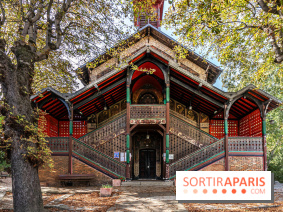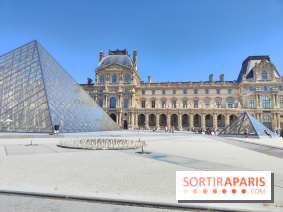It's one of the images that impresses those discovering Paris for the first time:Haussmann architecture. Entire districts of the capital boast this iconic style, offering passers-by a spectacular effect of perspective and symmetry that continues the timeless beauty of the City of Light. And yet, Haussmannian architecture is something we sometimes know without really knowing, even if we've always been Parisians. That's why we're taking you on a journey to discover the origins of this style, the districts where it can be admired, its emblematic features, and we'll reveal the secrets to distinguishing a true Haussmann masterpiece from buildings inspired by it.
But first,where do Haussmann buildings come from? Named after the prefect of the Seine, Georges-Eugène Haussmann, who oversaw the transformation of Paris in the 19th century, these buildings came into being during major renovation projects. The narrow, unhealthy streets of Paris gave way to wide avenues, parks and elegant buildings with dressed stone facades, wrought-iron balconies and mansard roofs. If you'd like to immerse yourself in authentic Haussmann architecture, head for emblematic Paris districts such as the 8th arrondissement, home to the famous Champs-Élysées avenue, the 9th arrondissement with its magnificent opera houses, and the 16th arrondissement, which offers a breathtaking view of the Eiffel Tower. These districts literally transport us back to the Paris of the time.
And yet, it sometimes seems as if Haussmanian buildings are to be found in every arrondissement of the capital. Well, not really: there's the "real" stuff, the historic buildings, and the "fake" stuff, buildings whose architecture resembles or is inspired by them, but which can't really be described as " Haussmanian". To distinguish between the two, you need to know the characteristics of true Haussmanian architecture.
In these buildings, the placement of second-floor balconies reflected the social hierarchy of the time. The wealthiest residents occupied this noble floor, while servants and workers lived in the upper floors and attics. Thus, on the 6th floor of Haussmann buildings, we find what are commonly known as "maid's rooms". This arrangement enabled the masters of the house to remain close to city life while preserving their privacy, while the servants took care of daily chores. One of the most distinctive features of Haussmann architecture is the placement of balconies: true Haussmann buildings have a balcony on the second floor and another on the 5th floor.
Now you know more about what is probably the capital's most iconic architectural style! Next time you take a stroll through the Haussmann district, be sure to impress your friends and family with what you've just learned!
This page may contain AI-assisted elements, more information here.















